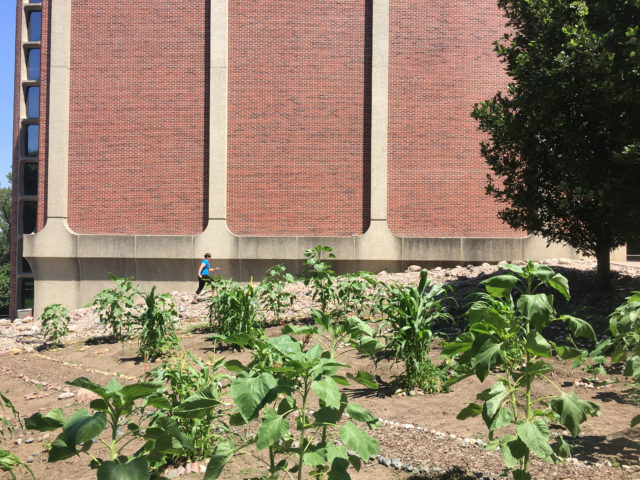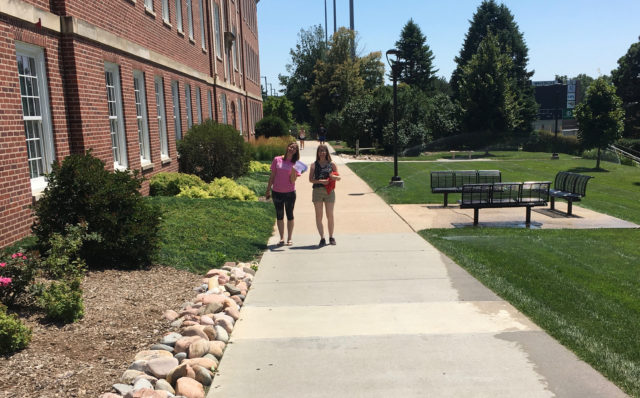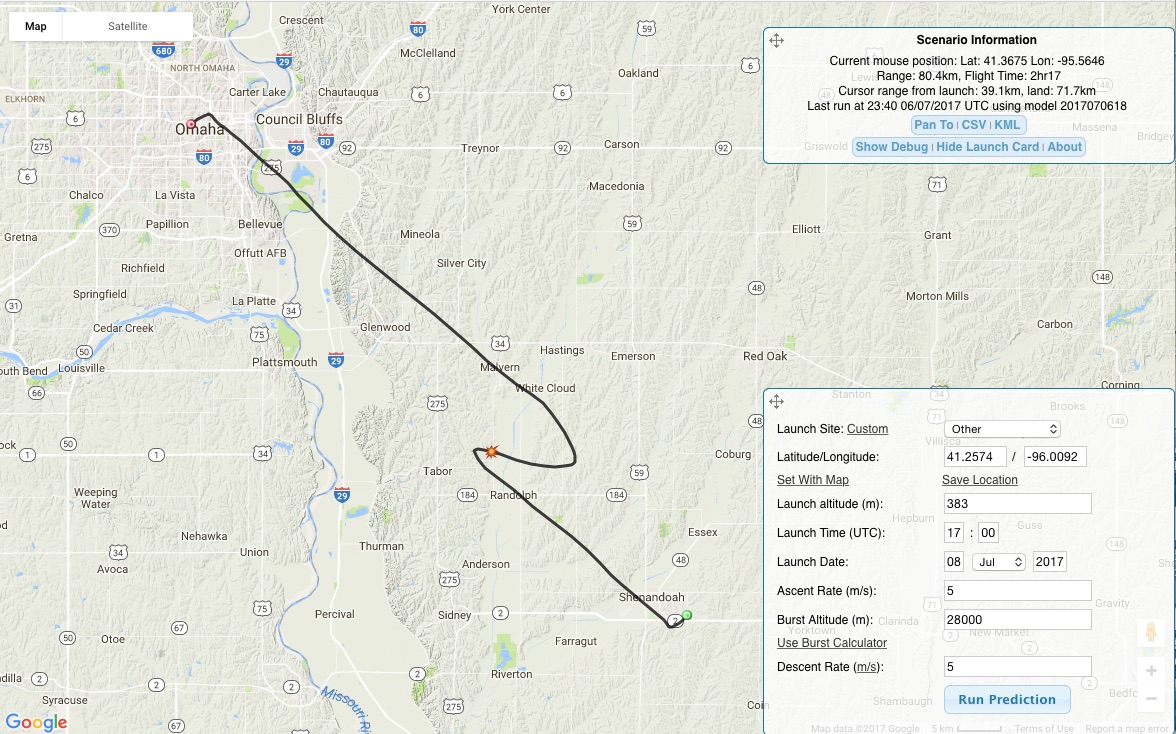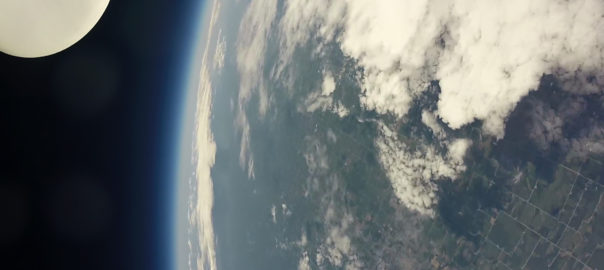Michael presented a four day workshop for educators this summer on High Altitude Ballooning (HAB) with support of UNO STEM. The workshop culminated in our 63rd successful HAB flight.
The participants of the workshop learned about the conditions of near space, how to use HAB to teach scientific inquiry, and the technology involved with doing a HAB flight.
One of the exercises was to practice geocaching, putting latitude and longitude in a handheld GPS unit and finding a hidden container. It is a fun kind of high tech scavenger hunt and this helps them learn how to use the GPS to find the payloads when we get the coordinates from our tracking systems. Special caches were hidden on the UNO campus and the teachers found them relatively quickly.


They also learned how to properly fill a weather balloon with helium. These were small balloons, about 350 g rather than the 1200 g or 2000 g ones we use for our flights.



Rather than track and chase these balloons, the educators put messages in bottles and will see if someone finds them.

Since we had difficulties with the lift on our last two flights, we decided to use the analog scale instead of the digital one and took the weight of all of the pods and multiplied by two to figure an appropriate lift. We ended up measuring about 17 pounds of lift and the flight went well.

The main HAB flight for the workshop was on the morning of Saturday, July 8, 2017. It was partly cloudy, the temperature was in the high seventies, and it was very humid.
One of the wires to the battery on the APRS broke off the connector and, since we had taken all of the tool kits home the day before, we did not have a soldering iron nor a new connector to repair it. We ended up making a quick fix by stripping the wire and pinching it in the connector to make sure it had continuity and taping it closed. The APRS ended up working through the whole flight, but we will need to replace the connector before we use it again.
We also had trouble starting the SatCom to launch mode. The app on the iPad we use was not connecting properly. We had to make sure the WiFi switch was in the “ON” position before we started the power on the device and then it worked.
The team went over the launch protocols.

They prepared their pods.

They filled the balloon.


Picture from the external camera on one of the pods.

Getting ready for liftoff.


Those are some pretty nifty clouds. I wonder what they look like from above?


The following pictures were taken from the external camera on the bottom pod.

Launch pad in the Pep Bowl on the UNO campus.

Memorial Park and downtown Omaha.

Golf course and Askarben area.

Looking toward the river and Iowa.

Right below the clouds.

Right above the clouds.

We captured a glory. The circular rainbow feature on the cloud is surrounding the shadow of the balloon.

So, that’s what the clouds look like from above.

Balloon selfie.

Beautiful limb of the Earth about 90,000 ft. up.

Burst over 93,000 ft.


Since we had multiple vehicles, we wanted a way to keep track of our teams if we got separated in the back roads of Iowa beyond the range of our walkie-talkies. We decided to try Glympse, an app to share your location on your phone for a limited number of hours. It worked well for us, but may be less helpful if we have poor cell service in the field.


The prediction had the balloon landing near Shenandoah. The payloads landed 35.2 miles from the launch point, a bit short of our prediction to the north of Shenandoah, but that may be because of the extra lift we had.
There were only a few minimum maintenance roads to navigate with one scary muddy section.

The black SUV squad with signs makes us look really official.

The payloads landed 300 ft. into a soybean field on the edge of a corn field. The parachute was the only thing visible.


After feeling the cool temperature inside the pods, the contents were examined.

The heavy whipping cream turned into butter. We are considering marketing “Post-Burst Chaos Butter.”

As well as “Near Space Gelatin.”


Aerospace Educators team after their successful flight and recovery. From the left, Michael Sibbernsen, Jake Arneson, Brent Staack, Jessica Westerlin, Sara Christensen, Amelia Tangeman, Katie Wanek, Tori Stangl, and Misty Banks Noon.

Check out our data, graphs, and social media feed on the Stratostar page for this flight.
*Edited to add: Read the Aerospace Educators’ Conclusions here.
